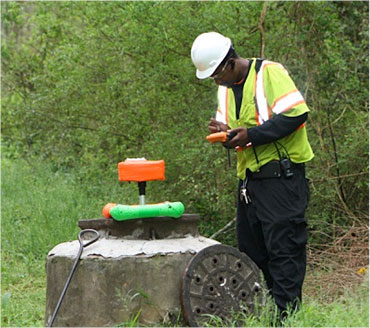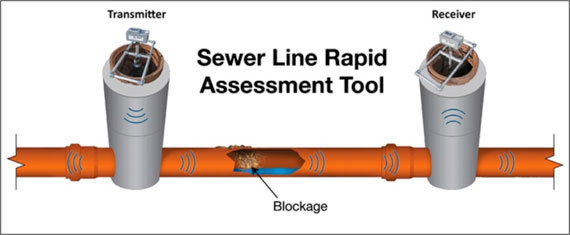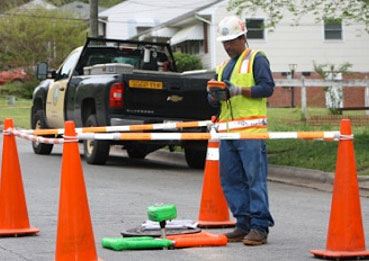Sanitary sewer overflows (SSOs) are most often caused by the long-term buildup of roots, fats, oils or grease within a pipe. An acoustic inspection is a cost-effective way to detect blockages before an overflow occurs.
What is an Acoustic Inspection?
The operator places a transmitter in a manhole that transmits a series of tones through the air gap within the pipe. A receiver is placed in an adjacent manhole and it listens for degradation in tones compared to a clean pipe. Sophisticated signal processing algorithms analyze the data in less than three minutes and rate the severity of the blockage on a scale from 0 to 10. Data that is collected is run through a quality control process that eliminates redundant and/or inaccurate testing.
Key Benefits of Acoustic Inspection
- Provides blockage assessment onsite in less than three minutes
- No confined-space entry or physical contact with the flow is required
- Cost-effective
- Integrates with GIS to develop TV work orders
- Eliminates unnecessary televising and cleaning
- Works in a wide variety of pipe geometries, diameters, and materials
- Approximately 2 miles of pipe can be inspected per day





 You must be satisfied or you pay absolutely nothing for our services
You must be satisfied or you pay absolutely nothing for our services




